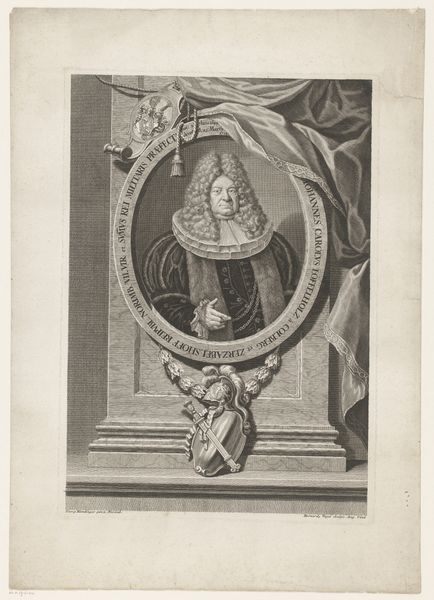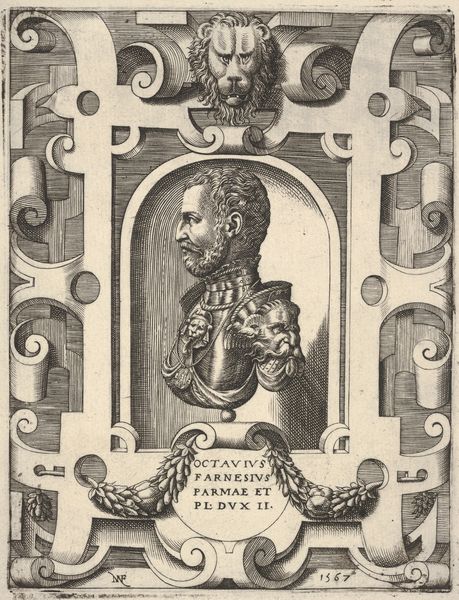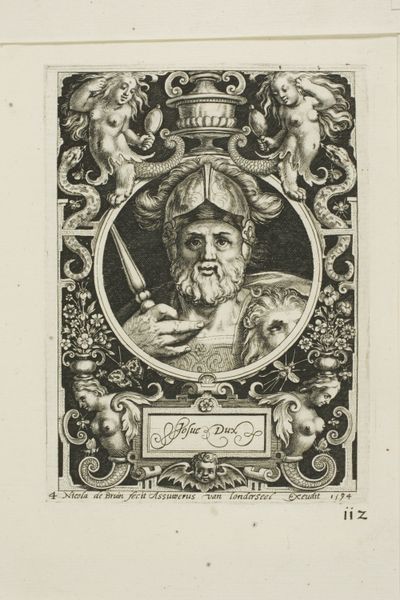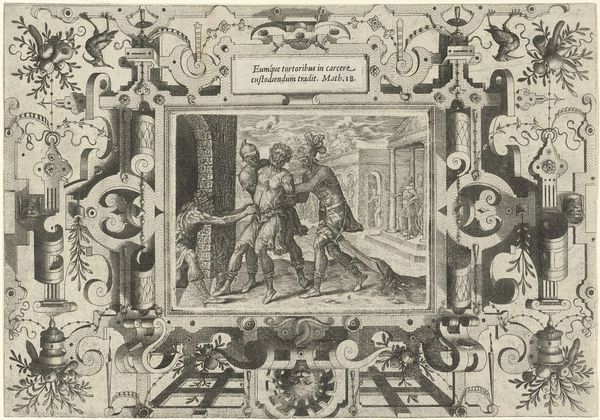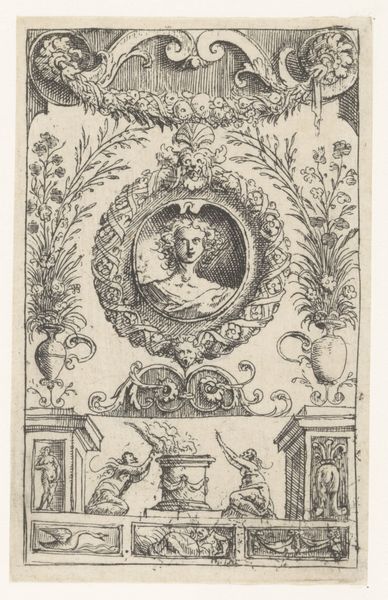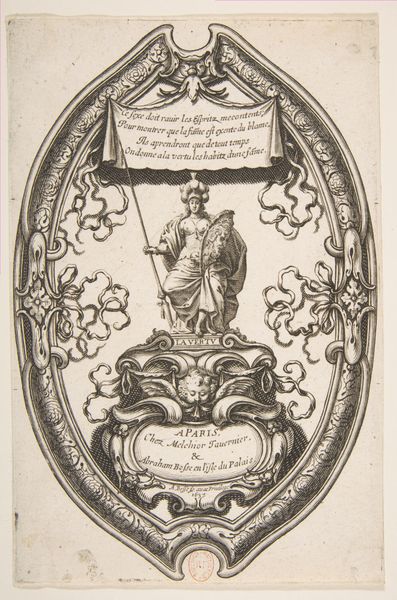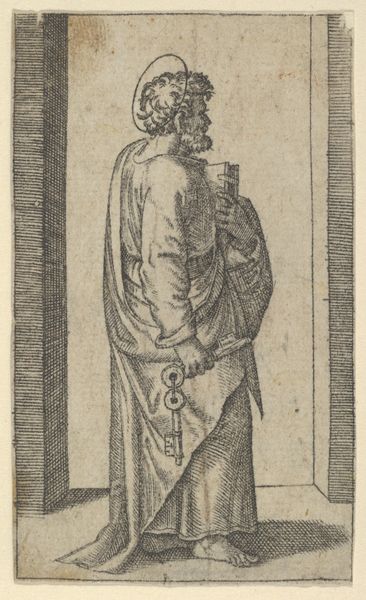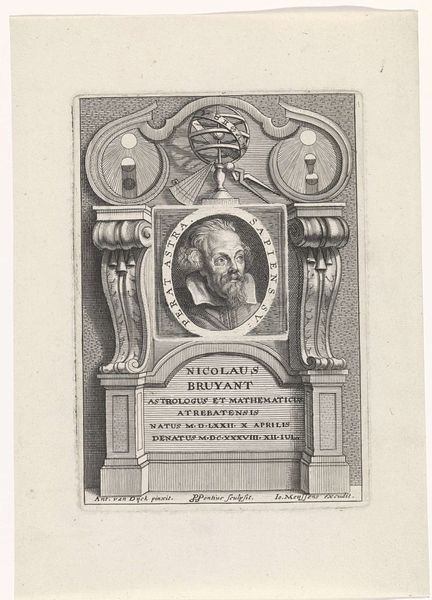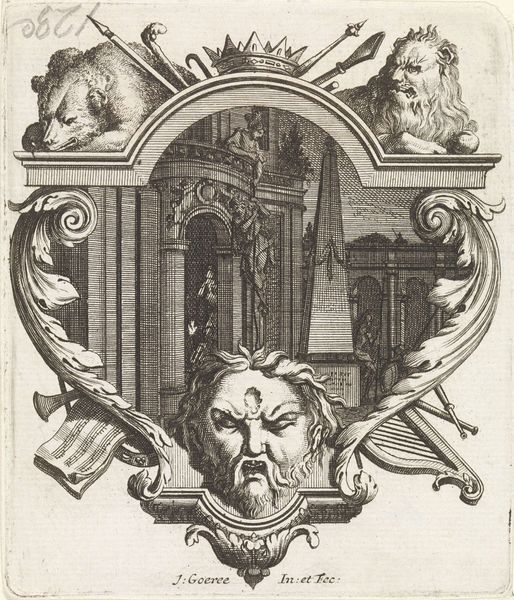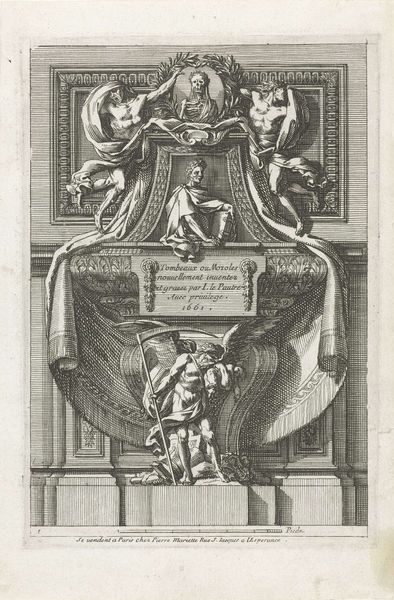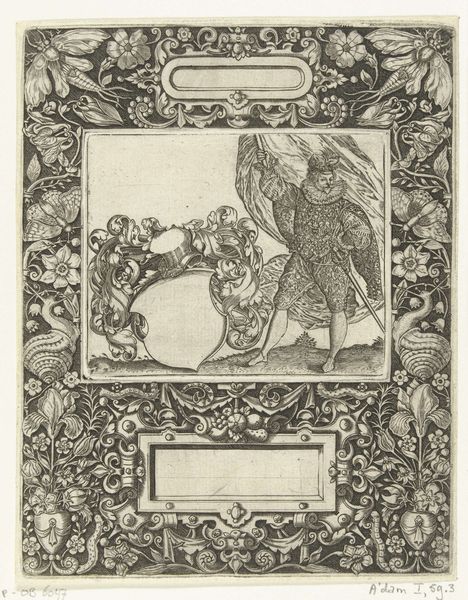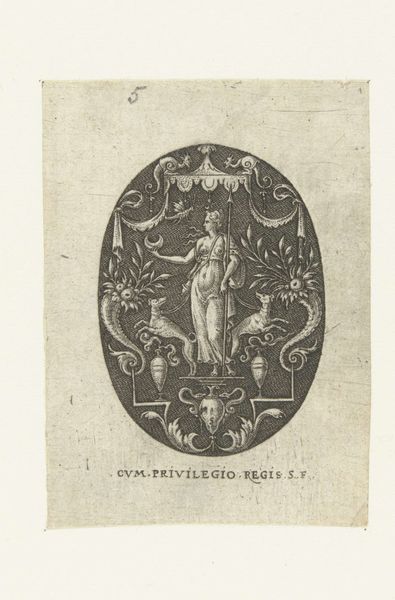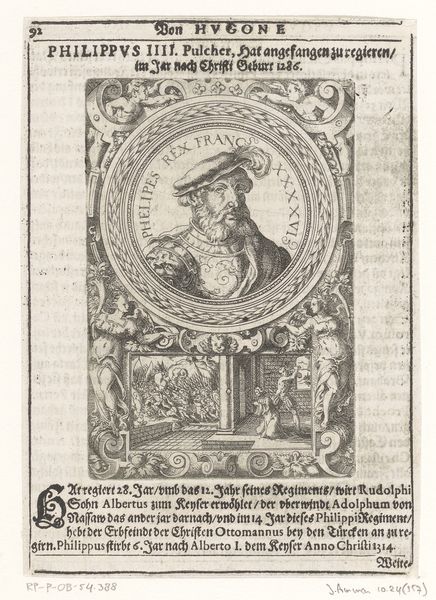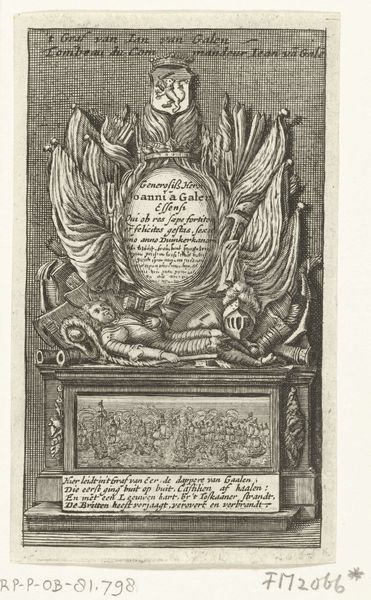
print, engraving
#
portrait
#
pen drawing
# print
#
11_renaissance
#
northern-renaissance
#
engraving
Dimensions: height 180 mm, width 187 mm, height 233 mm, width 189 mm
Copyright: Rijks Museum: Open Domain
Editor: Here we have "Portrait of Wolfgang Lazius," an engraving by Pieter van der Borcht I, dating somewhere between 1574 and 1612. It's incredibly detailed, especially the ornate frame surrounding the portrait. What stands out to you in this piece? Curator: The symbolic layering here is fascinating. Even though it is "just" a portrait, there's so much more that speaks to the subject's identity and the cultural context. Notice the Latin inscription, which alludes to Lazius's scholarly pursuits and connections to both Roman and Austrian realms. How do these elements, combined with the putti and decorative frame, shape your understanding of Lazius? Editor: It suggests that he was a learned man, someone of considerable status to be framed so elaborately. The putti are interesting—they almost feel contradictory to the serious tone of the portrait itself. Curator: Precisely. They could represent youthful intellectual vigor, but also, consider how cherubic figures were used during the Renaissance to signify divine approval or immortality. They aren't *just* decoration. It’s as if his scholarly achievements elevated him. Editor: I didn’t think about that aspect. So, the putti could also signify some sort of immortality through his work? Curator: It is an argument one could make. Also look closely, even the foliage seems deliberately chosen –perhaps a nod to classical learning or specific achievements of his that are hidden in the details? These details help create a sense of enduring legacy. It speaks to the power of images to convey complex ideas about identity and legacy. Editor: I’ll definitely be more attentive to these kinds of details from now on. Thanks. Curator: It’s about understanding the language of symbols –it transforms how we see, and therefore what these images tell us.
Comments
No comments
Be the first to comment and join the conversation on the ultimate creative platform.
